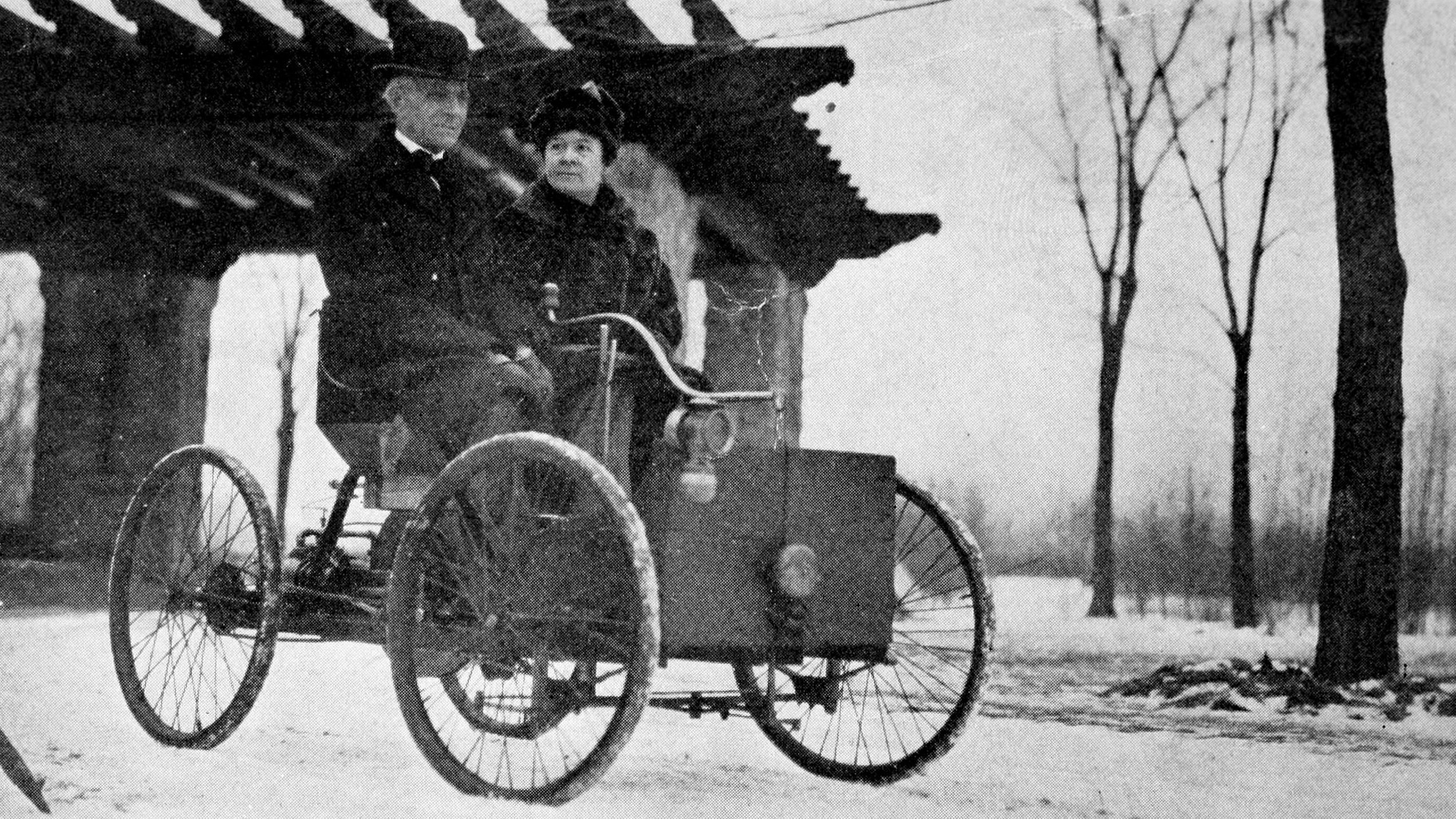How the “challenger brand” mindset can change the world

Credit: alexyz3d / Adobe Stock
- A “challenger brand” is defined by a determination to chase ambitions bigger than its conventional resources.
- Some of the world’s most successful companies have transferred this core mindset to societal challenges.
- Elevated ambition and the “spirit of activism” have been drivers of societal change — from Volvo’s standard safety belts to Microsoft’s carbon-negative moonshot.
When a business really succeeds in something — pulling ahead of the competition, launching a bold new product, transforming their operations, integrating a major new acquisition — it is because they have applied the core strengths of the business to a new question with a spirit of ambition. This is at the heart of making anything extraordinary happen: You need the desire to go further, to raise the bar, to aim high. Sam Walton is often quoted as saying, “High expectations are the key to everything.”
Many names in the pantheon of great corporate success stories are built on that. In the early days of Microsoft, Bill Gates articulated the ambition to put a computer on every desk and in every home. Tesla set out to prove that electric vehicles could be quicker, better, and more fun to drive than gasoline cars — and disrupted the traditional vehicle industry in the process. They started small and made it big. Adam Morgan, author of Eating the Big Fish, captured the essence of a successful challenger brand:
“A challenger brand is defined, primarily, by a mindset — it has business ambitions bigger than its conventional resources, and is prepared to do something bold, usually against the existing conventions or codes of the category, to break through.”
Pulling energy into harness behind ambitious goals is how the business world moves itself forward. What we are talking about here is summoning that same spirit and that capability to tackle tough societal challenges. These are inherently complex, difficult issues — unless you are ambitious in the way you approach them, you are unlikely to make any real impact. The Oxford English Dictionary defines “ambitious” as describing a plan or a piece of work “intended to satisfy high aspirations and therefore difficult to achieve.”
Once you look, you start to notice the many different ways companies take on a societal challenge imaginatively and with ambition. Volvo is a brand built on the promise of safety — yet when the company introduced the modern safety belt in the 1950s many people ridiculed it as a stupid idea. Since then, the safety belt has saved one million lives. In 2020 Volvo introduced a new safety measure in the form of a built-in speed cap, only to get the same response. But they pressed on, setting themselves a new ambition, A Million More, to save another million lives through the set of safety initiatives they have under development in the business.
Sam Walton is often quoted as saying, “High expectations are the key to everything.”
Coca-Cola has distribution chains that rely on a huge network of female micro-entrepreneurs that extends into villages all over the developing world — and, in 2010, they set in train 5by20, their campaign to empower five million women by 2020. They activated programs to provide business skills, financial services, mentors, and support networks for women, delivered with civil society partners in local communities worldwide. And by 2020 the company had exceeded their goal.
Intel’s chips require minerals sourced from some of the most war-torn places on the planet — and so they made a commitment to drive the conflict minerals out of their supply chain. Described as ambitious by industry commentators, their campaign — called In Pursuit of Conflict-Free — captured their spirit of activism: They were on a quest, going after something that is hard to attain but worth it.
The most urgent issue which all corporates today are being called on to step up to with real ambition is the climate crisis. By June 2022, 3,000 companies had signed up to Science Based Targets on climate, a huge increase from just 16 in 2016. But at a time when business leaders are lining up to make a commitment to becoming net zero by 2050, Microsoft took it to the next level. They announced their intention to be “carbon negative” by 2030 — meaning that, within the decade, the company aims to remove more carbon from the atmosphere than it emits each year. It is a bold move — and they call it a Moonshot: “It is an ambitious — even audacious — goal, but science tells us that it’s a goal of fundamental importance to every person alive today and for every generation to follow.’
When a business really succeeds in something it is because they have applied the core strengths of the business to a new question with a spirit of ambition.
In the extensive commentary that surrounded the detail of their announcement, inevitably the fans welcomed the urgency behind the stepped-up ambition and the skeptics focused on the reliance of new technologies that even the company acknowledges are not yet scalable or don’t even exist today. Lucas Joppa, the former Chief Environmental Officer at Microsoft, readily recognizes the uncertainty: “We have to go out and make some bets on technologies that don’t exist, on technologies that are too expensive, and on markets that aren’t mature enough,” he told Bloomberg. “They will never be cheap enough, they will never be scaled high enough, and they will never be mature enough unless a Microsoft comes in right now and starts pushing.” In Joppa’s view, the urgency to deliver innovation to scale is an argument for the involvement of the large corporates, not a reason to pull back from the challenge.
Ambition infuses Microsoft’s actions on other societal issues they take on. Unsurprisingly, as one of the world’s tech giants, the company is very active on digital skills. As the socioeconomic impacts of COVID became evident in 2020, Microsoft launched an initiative to help 25 million people worldwide to get access to digital skills by the end of the year. Seeing that the people hit hardest by job losses were those on lower incomes, women and under-represented minorities, they homed in on where they believed they could contribute most effectively: “The problem we need to solve,” they said, is that “the world will need a broad economic recovery that will require in part the development of new skills among a substantial part of the global workforce.”
They could move fast in part because they already had a substantial digital skills commitment. One of the long-standing pillars of that strategy is TEALS — Technology Education and Literacy in Schools — an initiative focused on students who’ve become excluded from computer science for reasons of race, gender, or geography. It gets tech professionals into U.S. high schools to work alongside teachers. Since it began in 2009, it’s built up and trained a network of 1,650 tech professional volunteers coming from 700 companies, reaching 93,000 students, tracking the impact on student performance and sharing what’s been learned along the way. As one Harlem teacher who has a TEALS volunteer coming into his classes put it, “It’s seeing that a real professional has taken time out of their day to come into our school that gives my students the confidence to say, ‘This could be me.'”
These individual stories are always heartwarming, but what distinguishes leadership initiatives such as this one is the level of ambition — not only to achieve large numbers, of people reached or dollars spent, but to build long-term capacity for computer science education across the entire system.




